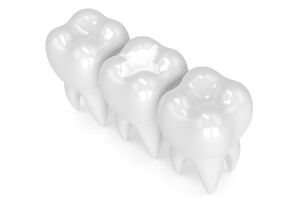
What Happens When I Go to the Dentist for a Toothache?
To treat your toothache, your dentist will first obtain your medical history and conduct a physical exam. He or she will ask you questions about the pain, such as when the pain started, how severe it is, where the pain is located, what makes the pain worse, and what makes it better. Your dentist will examine your mouth, teeth, gums, jaws, tongue, throat, sinuses, ears, nose, and neck. X-rays may be taken as well as other tests, depending on what your dentist suspects is causing your toothache.
What Treatments Are Available for a Toothache?
Treatment for a toothache depends on the cause. If a cavity is causing the toothache, depending upon the extent of the cavity, your dentist will fill the cavity. A root canal might be needed if the tooth decay has caused an infection of the tooth’s nerve. If the decay is too extensive, the tooth may require extraction. An antibiotic may be prescribed if there is fever or swelling of the jaw.
How Can Toothaches Be Prevented?
Since most toothaches are the result of tooth decay, following good oral hygiene practices is the best way to prevent toothaches. Good oral hygiene practices consist of brushing regularly with a fluoride-containing toothpaste, flossing at least once daily, rinsing once or twice a day with an antiseptic mouthwash, and seeing your dentist twice a year for professional cleaning. In addition to these practices, eat foods low in sugar and ask your dentist about sealants and fluoride applications.
If you, your family or friends need dental care, we would be honored to provide you with state-of-the-art dental care in our modern dental practice. Refer someone you love to someone you trust!
Presented as a service to the community by Doctors Hoover and Yanda,




 These are obvious benefits for patients who do not have dental insurance. But many people who have dental insurance have found that our in-office Concierge Plan works better for them…less out of pocket expense for many, no yearly cap, no insurance company dictating what treatment they will pay for or which doctor you’re allowed to see. There is no deductible. No Claim forms to submit. No pre-authorizations required. No restrictions for pre-existing conditions. Free consultations. No waiting period. No interference with the doctor-patient relationship. Quite a few advantages over traditional dental insurance…might be worth comparing with your dental insurance plan.
These are obvious benefits for patients who do not have dental insurance. But many people who have dental insurance have found that our in-office Concierge Plan works better for them…less out of pocket expense for many, no yearly cap, no insurance company dictating what treatment they will pay for or which doctor you’re allowed to see. There is no deductible. No Claim forms to submit. No pre-authorizations required. No restrictions for pre-existing conditions. Free consultations. No waiting period. No interference with the doctor-patient relationship. Quite a few advantages over traditional dental insurance…might be worth comparing with your dental insurance plan. A: Dental sealants are a protective coating a dentist applies to shield the teeth’s enamel layer from food debris that can get caught in the uneven surfaces of your teeth. In particular, the teeth in the back of your mouth have pits and fissures. The uneven terrain of those teeth is especially vulnerable to the development of cavities.
A: Dental sealants are a protective coating a dentist applies to shield the teeth’s enamel layer from food debris that can get caught in the uneven surfaces of your teeth. In particular, the teeth in the back of your mouth have pits and fissures. The uneven terrain of those teeth is especially vulnerable to the development of cavities. Because we know our patients don’t want to be forced to choose their dentist from a discount list, we are “unrestricted providers”. That means that even though we aren’t in your network, we can still see you and provide the best quality dentistry possible. We’ll inform you of our fees and help you estimate how much your insurance will reimburse you. We will still submit your insurance claim for you. We’ll offer you some great payment options. You may be paid directly by your insurance company. We’ll be happy to review your insurance plan with you.
Because we know our patients don’t want to be forced to choose their dentist from a discount list, we are “unrestricted providers”. That means that even though we aren’t in your network, we can still see you and provide the best quality dentistry possible. We’ll inform you of our fees and help you estimate how much your insurance will reimburse you. We will still submit your insurance claim for you. We’ll offer you some great payment options. You may be paid directly by your insurance company. We’ll be happy to review your insurance plan with you.

 If a tooth is knocked out, first of all, retrieve it if you can. Keep it moist with saliva or milk. Don’t scrub it clean because some of the fiber attached to it could be helpful in successfully replanting the tooth. Go to your dentist—not a hospital emergency room—as quickly as possible. Likewise, if you chip or break a tooth, retrieve the broken-off part if possible. If the dentist cannot repair the tooth with the part you retrieved, depending on the size of the chip, he may be able to fix it with a tooth-colored resin. If the chip is sizable, however, the dentist may need to put a crown over the tooth.
If a tooth is knocked out, first of all, retrieve it if you can. Keep it moist with saliva or milk. Don’t scrub it clean because some of the fiber attached to it could be helpful in successfully replanting the tooth. Go to your dentist—not a hospital emergency room—as quickly as possible. Likewise, if you chip or break a tooth, retrieve the broken-off part if possible. If the dentist cannot repair the tooth with the part you retrieved, depending on the size of the chip, he may be able to fix it with a tooth-colored resin. If the chip is sizable, however, the dentist may need to put a crown over the tooth.